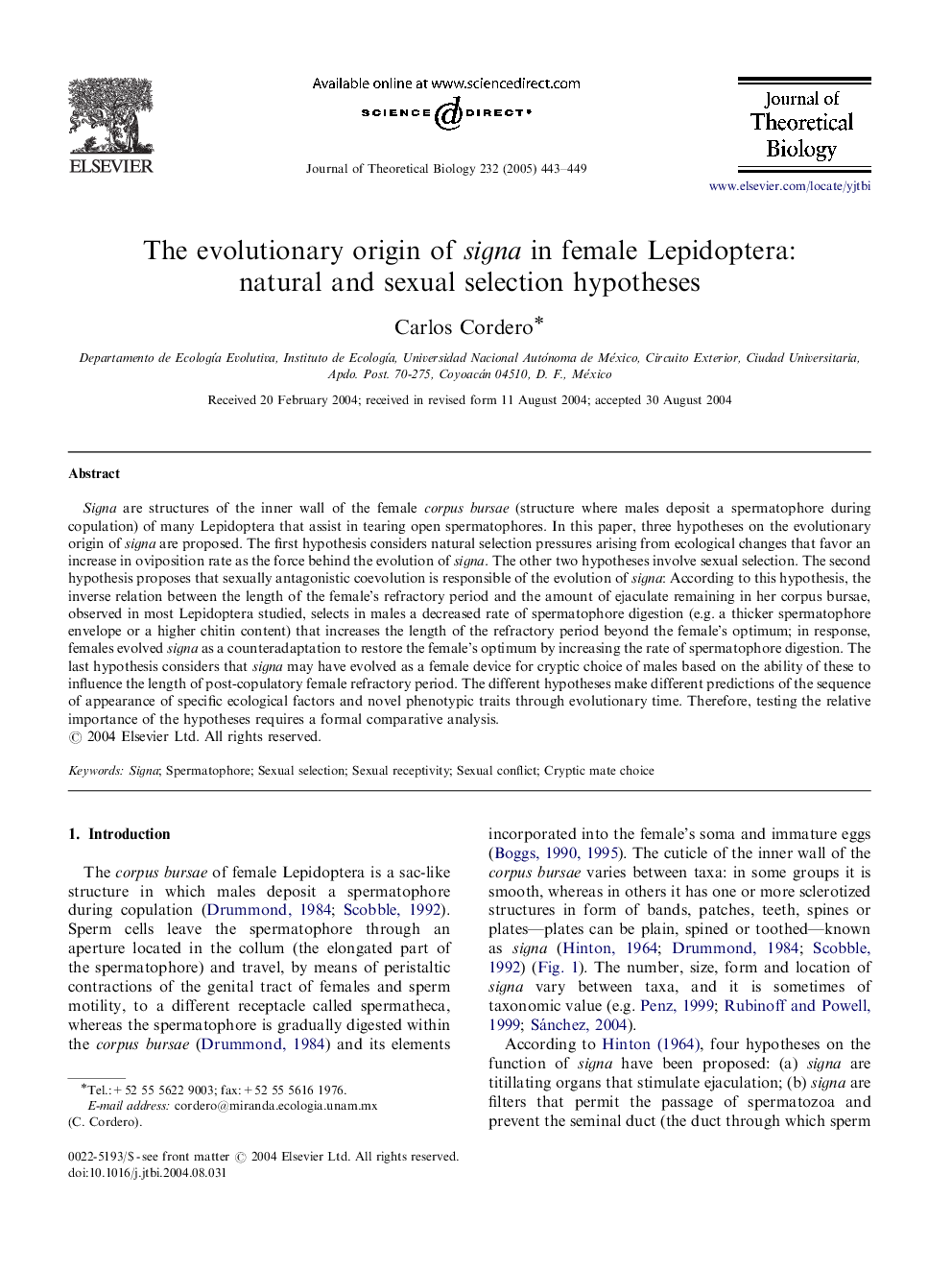| Article ID | Journal | Published Year | Pages | File Type |
|---|---|---|---|---|
| 9469943 | Journal of Theoretical Biology | 2005 | 7 Pages |
Abstract
Signa are structures of the inner wall of the female corpus bursae (structure where males deposit a spermatophore during copulation) of many Lepidoptera that assist in tearing open spermatophores. In this paper, three hypotheses on the evolutionary origin of signa are proposed. The first hypothesis considers natural selection pressures arising from ecological changes that favor an increase in oviposition rate as the force behind the evolution of signa. The other two hypotheses involve sexual selection. The second hypothesis proposes that sexually antagonistic coevolution is responsible of the evolution of signa: According to this hypothesis, the inverse relation between the length of the female's refractory period and the amount of ejaculate remaining in her corpus bursae, observed in most Lepidoptera studied, selects in males a decreased rate of spermatophore digestion (e.g. a thicker spermatophore envelope or a higher chitin content) that increases the length of the refractory period beyond the female's optimum; in response, females evolved signa as a counteradaptation to restore the female's optimum by increasing the rate of spermatophore digestion. The last hypothesis considers that signa may have evolved as a female device for cryptic choice of males based on the ability of these to influence the length of post-copulatory female refractory period. The different hypotheses make different predictions of the sequence of appearance of specific ecological factors and novel phenotypic traits through evolutionary time. Therefore, testing the relative importance of the hypotheses requires a formal comparative analysis.
Related Topics
Life Sciences
Agricultural and Biological Sciences
Agricultural and Biological Sciences (General)
Authors
Carlos Cordero,
